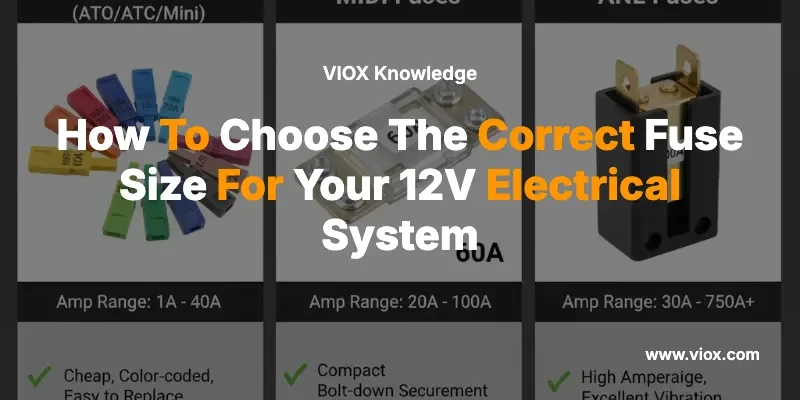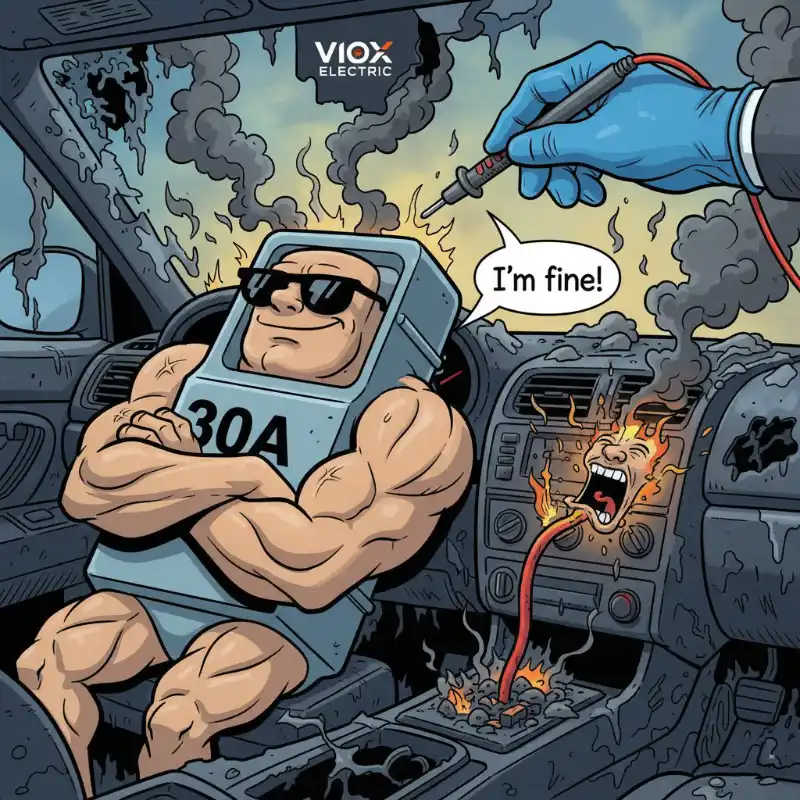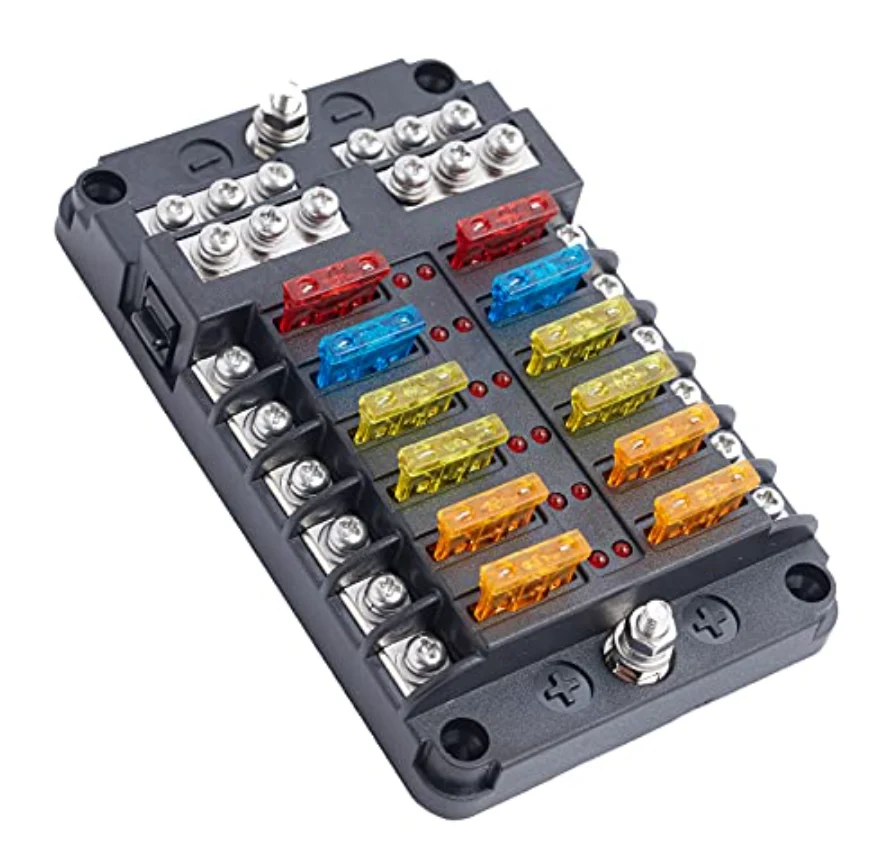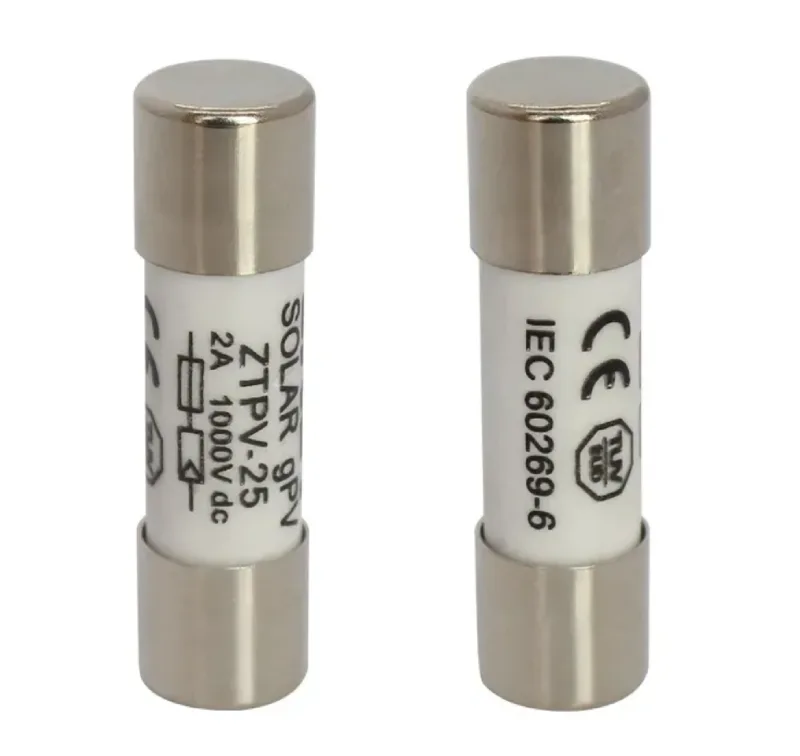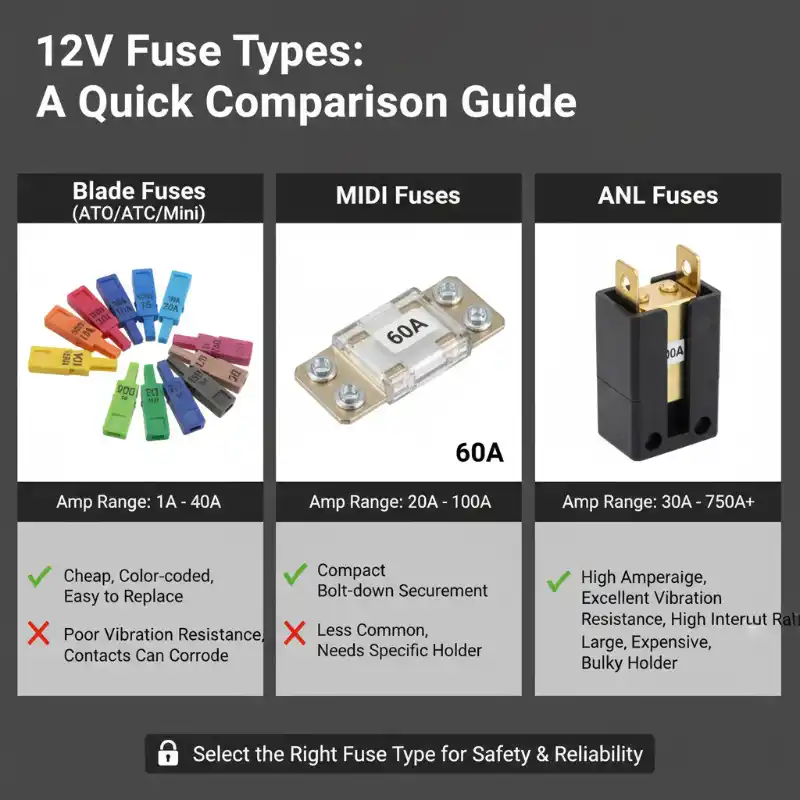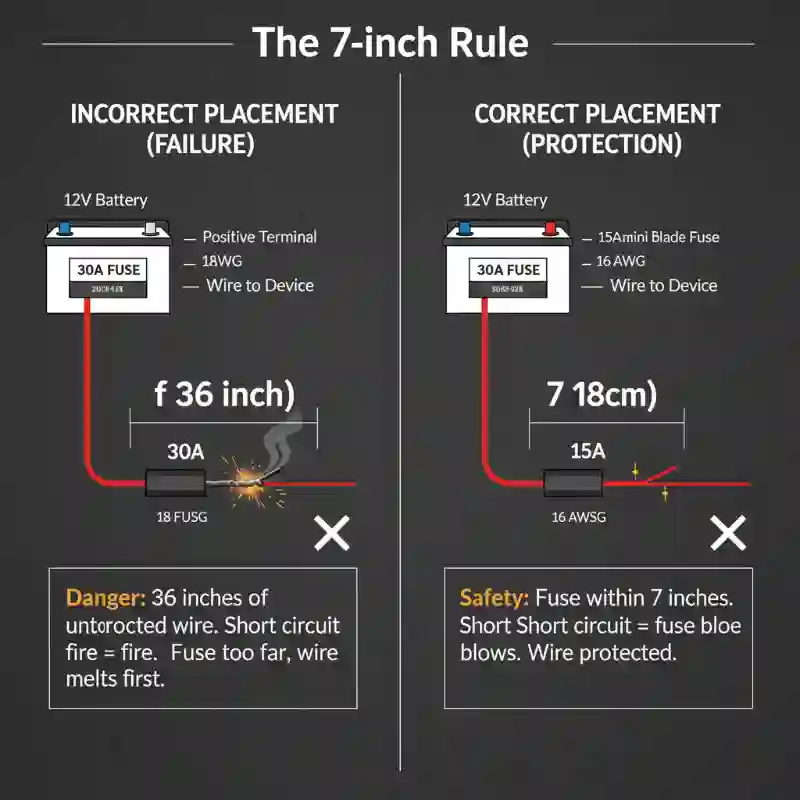$800. That’s what the aftermarket stereo cost.
The wiring harness replacement? Another $1,200. Labor to tear apart the dashboard and trace every melted wire? Don’t ask. The homeowner’s insurance adjuster standing in your driveway asking why you installed a 30-amp fuse on 18-gauge wire? Priceless—but not in a good way.
Here’s what happened: The stereo pulled 12 amps. The installer thought “bigger fuse = better protection” and slapped in a 30A blade fuse. Worked fine for three months. Then a mounting screw vibrated loose inside the dash, the positive wire chafed through its insulation, and that 18-gauge wire tried to carry whatever current the battery could deliver—somewhere north of 400 amps. The 30A fuse sat there doing nothing while the wire turned into a heating element. By the time the smell reached the driver, half the dashboard wiring was melted.
The fuse didn’t blow because the fuse was never there to protect the stereo. It was there to protect the wire.
Most people get this backwards. Let’s fix that.
The Fuse Doesn’t Protect Your Device (It Protects Your Wire)
Here’s the revelation that changes everything: your fuse is The Wire Guardian, not the device guardian.
Think about it. Your $800 stereo has its own internal protection—circuit boards with thermal shutoffs, voltage regulators, internal fuses. Modern electronics are surprisingly good at protecting themselves. But that 18-gauge wire running from your battery to the device? It’s just copper and insulation. Hit it with 50 amps and it turns into a $15-per-foot firestarter.
The fuse’s primary job is to blow zanim the wire’s insulation melts. The device is secondary. In fact, most manufacturer-recommended fuse ratings are lower than what the device can technically handle—they’re sized to protect the wire you’re likely to use, not the maximum the device can survive.
Here’s the math that makes this clear: 18-gauge wire can safely carry about 16 amps in typical automotive installations (based on ABYC standards for enclosed wire runs). Put a 30A fuse on that circuit and you’ve just told the electrical system “it’s fine to push 30 amps through this wire before you should interrupt the circuit.” Except 30 amps through 18-gauge wire generates enough heat to melt PVC insulation in under a minute during a dead short.
That’s not protection. That’s a delayed ignition system.
The Wire Guardian concept means this: Size your fuse based on wire ampacity first, device requirements second. If your device needs a 20A fuse but you’re using 18-gauge wire (16A rating), you need bigger wire—not a bigger fuse. Miss this check and you’ve essentially removed your safety system while keeping the illusion that you’re protected.
The Two-Factor Fuse Sizing Method
Proper fuse sizing requires passing two separate checks. Think of it like a Boolean AND gate—both conditions must be true, or the system fails.
Factor 1: Device Current × 125% = Minimum Fuse Rating
This is The 125% Rule. Your fuse needs to be 25% larger than your device’s continuous current draw. Why? Because fuses aren’t precision instruments—they’re thermal devices that heat up and melt. A 10A fuse carrying exactly 10A will slowly fatigue over months and eventually blow, even though nothing’s wrong. The 125% margin prevents nuisance blows while still providing protection.
Example: Your LED light bar draws 8 amps continuously.
– 8A × 1.25 = 10A minimum fuse size
Round up to the next available fuse rating. If your calculation gives you 12.7A, you use a 15A fuse (standard blade fuse ratings: 5, 7.5, 10, 15, 20, 25, 30A). Never round down—that guarantees nuisance blows. Always round up to the next available size.
Factor 2: Wire Ampacity ≥ Fuse Rating
This is the check most people skip. Your wire must be rated to handle at least as much current as your fuse allows through. Actually, best practice says the wire should handle 125% of the fuse rating for safety margin, but at minimum it must match.
Same example: You calculated a 15A fuse for your 8-amp light bar.
– Check your wire gauge chart: Are you using wire rated for ≥15A?
– 18 AWG (automotive) = 16A rating ✓ (barely passes, but acceptable)
– 20 AWG (automotive) = 11A rating ✗ (fails—fuse will let through more current than wire can handle)
If Factor 2 fails, you have two options:
1. Increase wire size to match fuse requirement (better solution)
2. Decrease fuse size to match wire rating (only if Factor 1 still passes)
The Two-Factor Check isn’t optional. Skip Factor 1 and you get nuisance blows. Skip Factor 2 and you get fires.
4-Step Method to Size Fuses Correctly
Let’s walk through the complete process with real numbers and specific scenarios.
Step 1: Calculate Your Device Current Draw
Start with the basic formula: Current (Amps) = Power (Watts) ÷ Voltage (Volts)
For 12V systems: I = P ÷ 12
Real-world example: You’re installing a 100-watt LED light bar on your truck.
– Current = 100W ÷ 12V = 8.33 amps
That’s your continuous current draw—the steady-state amperage when the device is running normally.
But here’s where it gets interesting: continuous current vs. surge current. Some devices pull much more current during startup (motors, inverters, compressors). Fuses can handle brief surges without blowing, but you need to know your device’s characteristics:
- Resistive loads (lights, heaters, most electronics): Surge ≈ continuous. Use the continuous current for calculations.
- Inductive loads (motors, solenoids, relays): Surge = 3-7× continuous. We’ll handle these in Step 2.
One more consideration: If your device lists amperage directly on the nameplate or in the manual, use that number. It’s more accurate than reverse-calculating from wattage. Manufacturers account for efficiency losses and power factor in their amp ratings.
Step 2: Apply the 125% Rule (or 250% for Motors)
Take your continuous current and multiply by 1.25.
For resistive loads (lights, electronics, heaters):
– Minimum fuse = Device amps × 1.25
Continuing our LED light bar example:
– 8.33A × 1.25 = 10.4A
– Round up to next standard size: 15A fuse
For motor loads (winches, pumps, fans, compressors):
– Minimum fuse = Device amps × 2.5
Why 250% for motors? Inrush current. When that bilge pump first kicks on, it might pull 40 amps for 200 milliseconds before settling to 8 amps running current. A standard 10A fuse (125% of 8A) would blow every single time the pump started. The 250% factor accounts for this startup surge.
Example: 8-amp bilge pump.
– 8A × 2.5 = 20A minimum fuse size
Critical rounding rule: Always round UP to the next available fuse size, never down. Standard automotive blade fuse sizes are 5, 7.5, 10, 15, 20, 25, 30A. If your calculation gives 12A, use 15A. If it gives 17A, use 20A. Rounding down causes nuisance blows; rounding up is already accounted for in the safety margin.
Step 3: Check Your Wire Ampacity
Now for The Two-Factor Check’s second factor. You’ve determined your minimum fuse size—but can your wire handle it?
Wire ampacity depends on several factors:
– Wire gauge (AWG): Smaller number = thicker wire = higher ampacity
– Wire length: Longer runs need larger wire for voltage drop (separate from ampacity, but related)
– Installation method: Enclosed in conduit/bundle vs. free air
– Temperatura otoczenia: Engine compartment vs. cabin space
Here’s a simplified 12V wire ampacity chart for typical automotive installations (based on 3% voltage drop allowance and enclosed wiring):
| Grubość drutu | Max Current (Amps) | Typical Application |
|---|---|---|
| 20 AWG | 11A | Small LED lights, accessories |
| 18 AWG | 16A | Medium lighting, radios, phone chargers |
| 16 AWG | 22A | Larger lights, power outlets, small pumps |
| 14 AWG | 32A | Heavy accessories, small inverters |
| 12 AWG | 41A | Large inverters, high-current accessories |
| 10 AWG | 55A | Winches, large inverters, main feeds |
| 8 AWG | 73A | High-power inverters (1000W+), main distribution |
The critical check: Your fuse rating must be ≤ your wire’s ampacity rating.
Back to our LED light bar:
– Calculated fuse: 15A
– Proposed wire: 18 AWG (16A rating)
– Check: 15A ≤ 16A ✓ PASSES (barely, but acceptable)
If you were using 20 AWG (11A rating) instead:
– Check: 15A ≤ 11A ✗ FAILS
– Solution: Upgrade to 18 AWG or larger wire
Pro-tip: When you’re close to the wire’s rating (within 2-3 amps), go up one wire size. That 15A fuse on 18 AWG wire will work, but 16 AWG gives you more thermal margin and reduces voltage drop. Wire is cheap compared to troubleshooting intermittent electrical issues.
Temperature matters too. That wire ampacity chart assumes 30°C (86°F) ambient temperature. If you’re running wire through an engine compartment where temperatures hit 60°C (140°F), you need to derate the wire’s capacity by about 30%. A 16A wire in a hot environment becomes effectively a 11A wire. When in doubt, go one size larger.
Step 4: Select Fuse Type and Place It Correctly
You’ve calculated your fuse size and verified your wire can handle it. Now: which type of fuse, and where does it go?
Fuse types for 12V systems:
- Blade Fuses (ATO/ATC/Mini/Maxi) — 1A to 40A
– Pros: Cheap, universally available, color-coded, easy to replace
– Cons: Poor vibration resistance above 20A, contacts can corrode
– Use for: Individual circuits, accessories, lighting, electronics
– Best for currents: Under 30A - Bezpieczniki ANL — 30A to 750A
– Pros: Bolt-down terminals, excellent vibration resistance, high interrupt rating
– Cons: Larger, more expensive, need specific holders
– Use for: Main battery protection, inverters, high-power devices
– Best for currents: 30A and up - MIDI Fuses — 20A to 100A
– Pros: Middle ground between blade and ANL, more compact than ANL
– Cons: Less common than blade fuses
– Use for: Distribution points, medium-high power circuits
– Best for currents: 30-100A
For our 15A LED light bar? Standard ATC blade fuse is perfect.
Now the critical part: placement. Enter The 7-Inch Rule.
Every fuse must be placed within 7 inches (18cm) of the power source. For battery-powered circuits, that means within 7 inches of the battery positive terminal. For circuits branching from a distribution block, within 7 inches of the distribution point.
Why 7 inches? Because any length of unfused wire is a fire waiting to happen. If your positive wire chafes through insulation and shorts to ground, every inch between the battery and the fuse becomes a conductor trying to pass hundreds of amps. Seven inches of 18-gauge wire might generate 50-100 watts of heat during a dead short—enough to ignite wire insulation or nearby materials in seconds.
The fuse holder itself matters too:
– Use properly rated fuse holders (don’t put a 30A fuse in a 10A holder)
– Crimp terminals properly (loose connections = heat = failure)
– Use waterproof holders for marine applications or exposed locations
– Consider fuse blocks for multiple circuits instead of individual inline holders
One final note: Fuse on the positive side only, never both sides. The negative (ground) return path should be unfused and continuous. Fusing both sides creates a scenario where a blown ground-side fuse leaves your device chassis at battery voltage—a shock and fire hazard.
The 3 Most Dangerous Fuse Sizing Mistakes
Let’s talk about the failure modes that turn safety devices into fire hazards.
Mistake #1: The Bigger-Is-Safer Myth
“The fuse kept blowing, so I went up to the next size. Problem solved!”
Except the problem wasn’t solved—it was postponed. That fuse was blowing for a reason: either your device was pulling more current than expected (maybe failing), or your wire was undersized. Increasing the fuse size just told the electrical system “ignore the problem until something melts.”
Real scenario: Customer installed 400-watt inverter on 14 AWG wire (32A rating). Used a 40A fuse because “the inverter needs 35 amps, so 40 is the next size up.” Math checks out, right?
Wrong. Under sustained high load, that inverter pulled 38 amps continuously. The 40A fuse never blew. The 14 AWG wire heated to 90°C and started melting insulation. Cost: $400 inverter (thermal damage), $800 wiring harness replacement, $1,200 labor.
Correct solution: 10 AWG wire (55A rating) with 40A fuse. Wire capacity exceeds fuse rating, everything protected.
The Bigger-Is-Safer Myth kills more electrical systems than undersized fuses. When a fuse blows, it’s shouting “fix the actual problem!” Silencing it by going bigger just turns off the alarm while the fire smolders.
Mistake #2: Ignoring Wire Ampacity (The Wire Guardian Failure)
People size fuses based solely on device requirements and forget to check if their wire can handle it. It’s the single most common way to bypass your own safety system.
The math seems logical: “My stereo needs 20 amps, so I’ll use a 25A fuse (125% rule).” Then you run 18-gauge wire (16A rating) because it was already in the vehicle or it’s what the parts store recommended.
Now you have a fuse that will happily pass 25 amps through wire rated for 16 amps. During a short circuit, that wire becomes the fuse—except it blows by melting and potentially igniting whatever’s nearby.
Check: Fuse rating ≤ Wire rating. Always. No exceptions.
Mistake #3: Wrong Fuse Placement (The Unfused Wire Problem)
Fuse three feet from the battery? “Close enough, right?” No. Those three feet of unfused wire are a liability.
Why this matters: A battery can deliver hundreds of amps during a dead short—limited only by internal resistance and wire resistance. Even 12 inches of 14 AWG wire carrying 400 amps generates about 32 watts of heat per foot. Over 3 feet, that’s nearly 100 watts of heating in the wire. Insulation melts. Adjacent wires start melting. Things get exciting fast.
The 7-Inch Rule exists because testing has shown that 7 inches of properly sized wire can survive a short-circuit event long enough for the fuse to blow without causing secondary damage. Push it to 3 feet and you’re gambling that the fuse blows before the wire insulation fails somewhere in that unfused run.
Place fuses within 7 inches of power sources. It’s not a suggestion—it’s the difference between a blown fuse and a wiring fire.
Wire Your System Right (And Keep It That Way)
The fuse is The Wire Guardian—size it to protect the wire, verify your wire can handle the fuse, place it within 7 inches of the power source.
Quick checklist before you energize any circuit:
– ✓ Device current calculated (Watts ÷ 12V = Amps)
– ✓ 125% applied (or 250% for motors)
– ✓ Wire ampacity checked (fuse ≤ wire rating)
– ✓ Fuse placed within 7″ of power source
– ✓ Proper fuse type selected for current level
– ✓ All connections crimped properly and terminals rated for current
Remember that $800 stereo fire from the opening? Here’s how it should have been done: 12-amp stereo, 15A fuse (12A × 1.25), 16 AWG wire (22A rating), fuse placed 6 inches from battery positive. Wire capacity exceeds fuse rating. Fuse is within 7 inches. If that mounting screw works loose and shorts the wire, the fuse blows in milliseconds—long before the wire heats up enough to melt anything.
Total cost to do it right: $18 for proper wire, $2 for correct fuse, 15 extra minutes of installation time.
Total cost to do it wrong: $2,800 and explaining to an insurance adjuster why you thought a 30A fuse on 18-gauge wire was a good idea.
Bezpieczniki are the cheapest insurance in your electrical system. Size them based on wire capacity, not wishful thinking. The Wire Guardian only works if you let it do its job.

